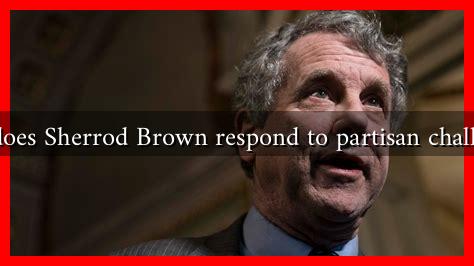-
Table of Contents
- How Does Sherrod Brown Respond to Partisan Challenges?
- Understanding Sherrod Brown’s Political Landscape
- Empathy and Connection: The Cornerstones of Brown’s Approach
- Legislative Initiatives: Bridging the Partisan Divide
- Strategic Communication: Navigating Partisan Rhetoric
- Case Studies: Successful Bipartisan Collaborations
- Conclusion: A Model for Bipartisanship in a Divided Era
How Does Sherrod Brown Respond to Partisan Challenges?
As a prominent figure in American politics, Senator Sherrod Brown of Ohio has navigated the turbulent waters of partisan challenges with a unique blend of pragmatism, empathy, and strategic communication. His approach not only reflects his personal values but also resonates with a diverse constituency in a politically divided state. This article explores how Brown responds to partisan challenges, highlighting his strategies, key initiatives, and the impact of his leadership style.
Understanding Sherrod Brown’s Political Landscape
Senator Sherrod Brown has served in the U.S. Senate since 2007, representing a state that has often been a battleground for both major political parties. Ohio’s demographic diversity, economic challenges, and shifting political allegiances make it a microcosm of the national landscape.
. Brown’s ability to connect with voters across the aisle is crucial in this environment.
Empathy and Connection: The Cornerstones of Brown’s Approach
One of the defining features of Brown’s political style is his emphasis on empathy and connection with constituents. He often shares personal stories and experiences that resonate with everyday Americans. This approach helps him build trust and rapport, which are essential in overcoming partisan divides. Key elements of his empathetic approach include:
- Listening Tours: Brown frequently conducts listening tours across Ohio, engaging directly with constituents to understand their concerns and needs.
- Personal Narratives: He shares his own background, including his working-class roots, to relate to voters who feel disconnected from the political elite.
- Community Engagement: Brown actively participates in local events and forums, reinforcing his commitment to being accessible and responsive.
Legislative Initiatives: Bridging the Partisan Divide
Brown’s legislative initiatives often reflect a bipartisan approach, focusing on issues that resonate with a broad spectrum of voters. Some notable examples include:
- Manufacturing and Jobs: Brown has championed policies aimed at revitalizing American manufacturing, advocating for fair trade practices and job creation. His support for the Manufacturing Extension Partnership has helped small manufacturers in Ohio thrive.
- Healthcare Access: He has been a vocal advocate for expanding healthcare access, working across party lines to support initiatives that benefit low-income families and individuals with pre-existing conditions.
- Veterans’ Affairs: Brown has consistently pushed for improved services for veterans, collaborating with both Democrats and Republicans to enhance healthcare and support systems for those who have served in the military.
Strategic Communication: Navigating Partisan Rhetoric
In an era of heightened partisan rhetoric, Brown employs strategic communication to address challenges head-on. His methods include:
- Fact-Based Advocacy: Brown often relies on data and research to support his positions, countering misinformation and providing a solid foundation for his arguments.
- Inclusive Messaging: He crafts messages that appeal to a wide audience, focusing on common values such as hard work, family, and community.
- Social Media Engagement: Brown effectively uses social media platforms to communicate directly with constituents, share updates, and respond to concerns in real-time.
Case Studies: Successful Bipartisan Collaborations
Brown’s ability to work across the aisle is exemplified in several successful bipartisan collaborations:
- The CHIPS Act: Brown played a crucial role in advocating for the CHIPS Act, which aims to boost semiconductor manufacturing in the U.S. This legislation received support from both parties, highlighting Brown’s ability to unite differing factions around a common goal.
- Infrastructure Investment: His support for the Infrastructure Investment and Jobs Act showcased his commitment to improving Ohio’s infrastructure while garnering bipartisan support for critical projects.
Conclusion: A Model for Bipartisanship in a Divided Era
Senator Sherrod Brown’s response to partisan challenges serves as a model for effective leadership in a divided political landscape. Through empathy, strategic communication, and a commitment to bipartisan initiatives, he has managed to bridge divides and advocate for the needs of his constituents. As political polarization continues to shape American discourse, Brown’s approach offers valuable insights into how leaders can foster collaboration and understanding across party lines.
For more information on Sherrod Brown’s initiatives and political philosophy, you can visit his official website at brown.senate.gov.





